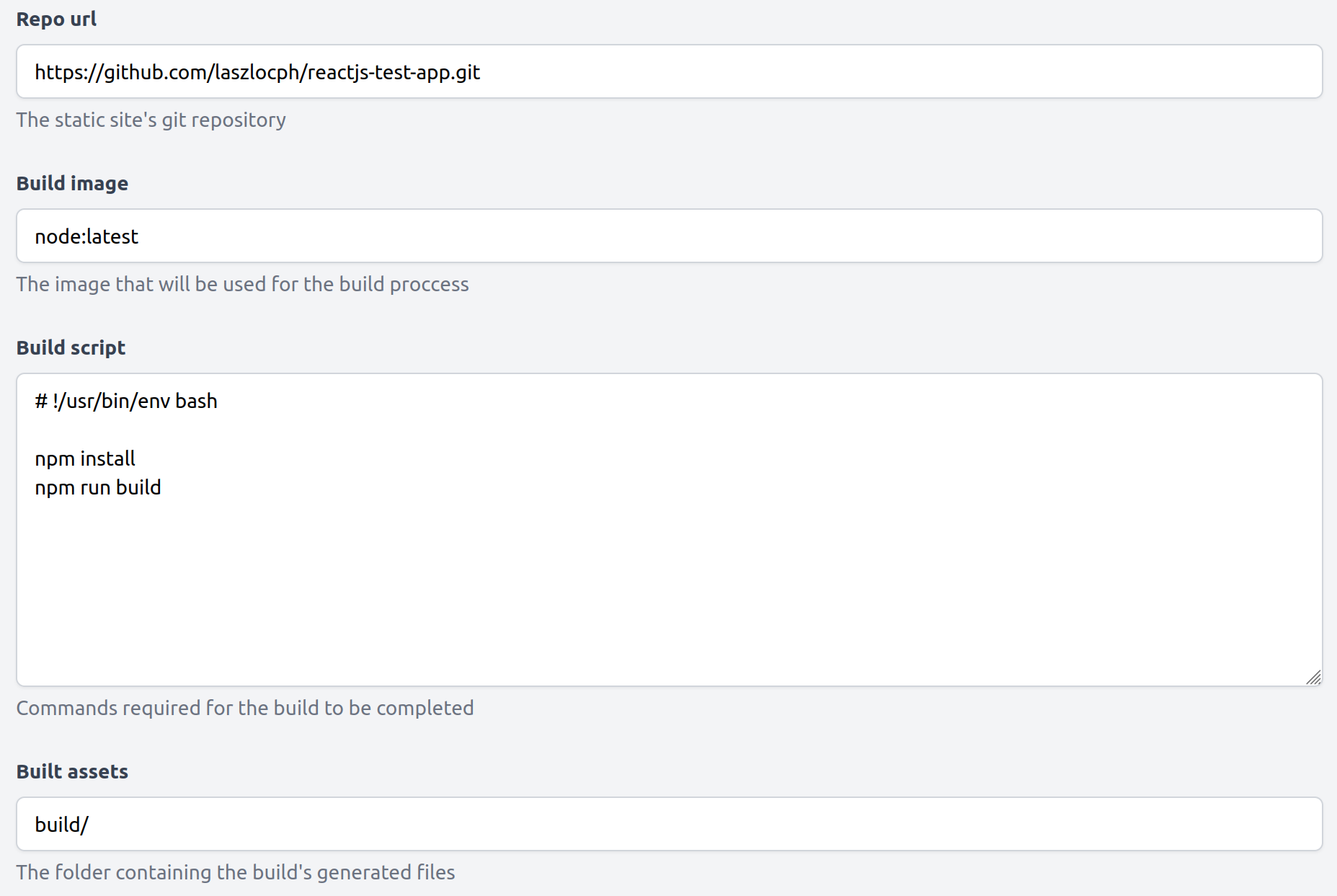Guides
Deploying static sites
In this guide you learn how to deploy static websites to Kubernetes with Gimlet.
The approach does not require container image building, and works generally for React, Next.js, Svelte, Vue, Hugo, Eleventy, Mkdocs, Docusaurus, etc. All the frameworks where the build output is a set of static assets: HTML, JS and CSS files
The approach matches how Netlify deploys static applications: you provide the build command, the rest is taken care of.
tldr
The following screen shows the required configuration to deploy a static site:

And the matching Gimlet manifest file that is created when you hit save on the dashboard:
app: reactjs-test-app
env: workable-firefly
namespace: default
chart:
repository: https://chart.onechart.dev
name: static-site
version: 0.57.0
values:
gitCloneUrl: https://github.com/laszlocph/reactjs-test-app.git
buildImage: "node:latest"
buildScript: |-
# !/usr/bin/env bash
npm install
npm run build
builtAssets: build/
Creating a manifest
If you use the deploy button without creating a deployment configuration first, Gimlet will try to build a container image for you with Buildpacks. This approach has limitations, and container image building takes time.
In this guide we show how you can add a static site deployment configuration, so you can skip image building completely.
- Navigate to your repository
- Make sure you have at least one connected environment
- Then click "New deployment configuration"
- Pick "static-site" in the "Deployment template" dropdown
- Then fill the build configuration as your application requires it, see a React example in the tldr section
Save the configuration.
Once you merged the pull request, you can locate the commit on the repository view to deploy it. (Like you did in the tutorial. Except the image building of course. That will not happen for static sites)
More context
You can learn about how the approach work on our blog.